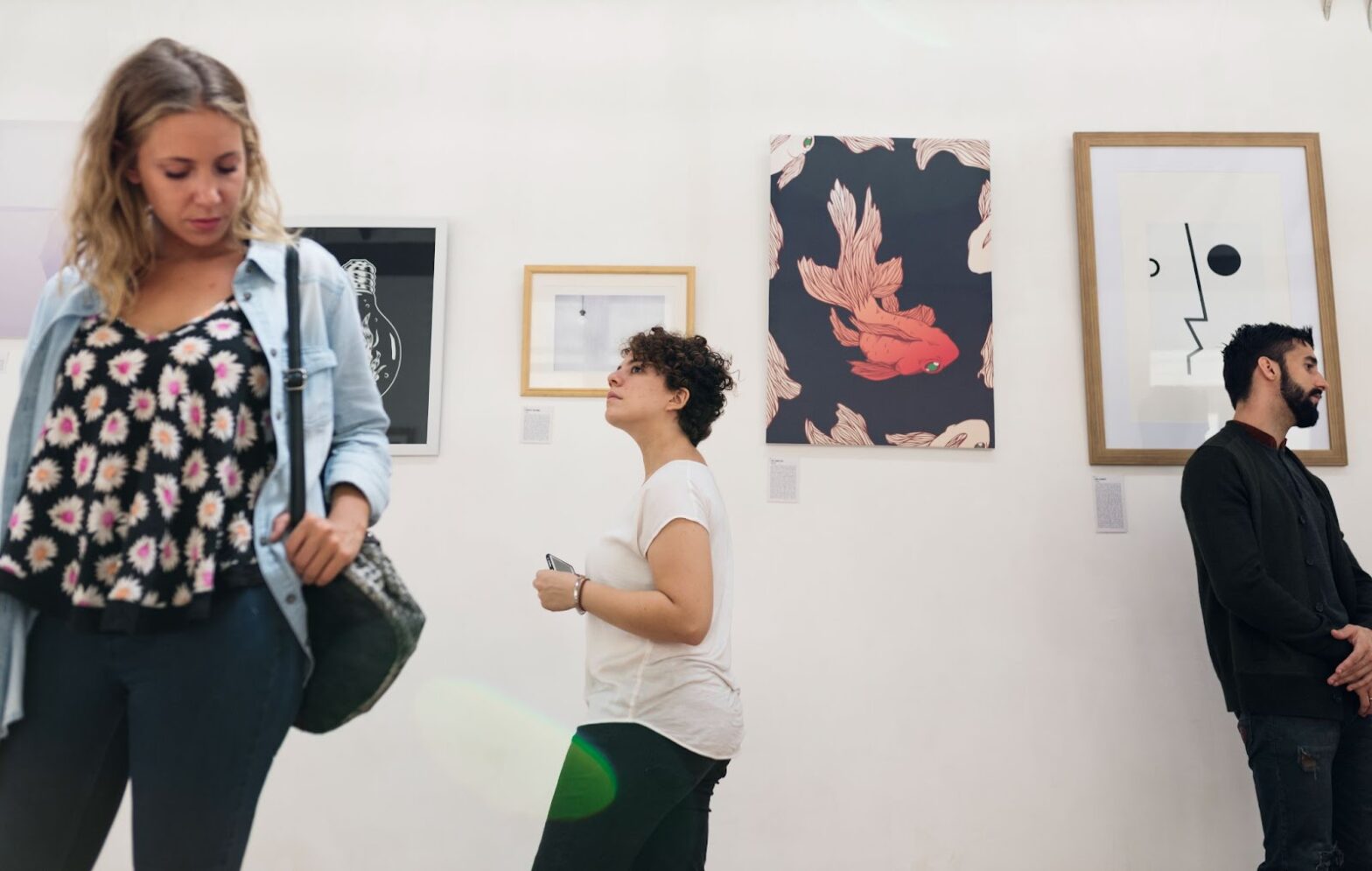When it comes to the world of art showcased within the hallowed walls of galleries, one encounters a duality in pricing. There exists the official, often lofty, price tag, and then there’s the more pragmatic, real-world figure that most art enthusiasts ultimately shell out. The act of negotiating art gallery prices holds significant sway, possessing the potential to either enhance your acquisition or shatter your artful aspirations. Consequently, one must recognize that art gallery prices are not set in stone; they are, in fact, open to negotiation.
But what facilitates the negotiability of art gallery prices? Surprisingly, the practice of haggling is not only sanctioned but, in many cases, anticipated – a somewhat clandestine revelation to many. The notion of seeking a reduction in price is not only permissible but encouraged, with the extent of the discount contingent upon an array of factors.
The art of negotiation within this realm is a subtle and strategic maneuver, far more intricate than meets the eye. It delves into the intricacies of how galleries appraise their prized artworks, unveiling essential insights that one should grasp before embarking on the path of seeking a discount. Alongside this, there exist certain tips and tactics to wield, aimed at maximizing the likelihood of securing a favorable deal. Art gallery prices, while indeed malleable, do, however, have their boundaries.
In essence, the realm of art gallery prices is a nuanced landscape where negotiation is not only permissible but is an art form in itself, with the potential to unveil hidden opportunities within the world of art acquisition.
Delving into Art Gallery Pricing Dynamics
Deciphering Gallery Revenue from Art Sales
Art galleries play a crucial role in the art market, acting as intermediaries between artists and art enthusiasts. The common financial arrangement in most commercial art galleries involves an equitable split of sales proceeds between the gallery and the artist. For instance, if an artwork is valued at 1,000€, both the gallery and the artist receive 500€ each. However, it is vital to acknowledge that the gallery’s share is not sheer profit. This portion is allocated to cover a myriad of operating costs, including but not limited to:
- Rental payments for the gallery space, except virtual art galleries;
- Salaries and wages for employees;
- Utility bills and other overheads;
- Marketing and promotional activities;
- Printing expenses for promotional materials such as flyers, labels, and price catalogues for each exhibition;
- Expenditures for hosting openings and events, including refreshments like wine.
In essence, the sale of artworks is the lifeblood of many galleries, as it represents their primary, if not sole, source of income.
Navigating the Art of Negotiation
When it comes to purchasing art, it’s imperative to have realistic expectations about the potential for price negotiations. Requesting substantial discounts, such as 30%, 40%, or even 50%, is often beyond the realm of possibility if a gallery is to remain financially viable. A more practical approach for prospective buyers, particularly when considering higher-priced pieces, is to aim for a modest discount in the range of 5-10%. This can still translate to a significant monetary saving, while also being a more palatable proposition for the gallery.
It’s worth noting that many galleries, driven by a sense of integrity and respect for artists, choose not to pass on the financial impact of discounts to the artists. Instead, they absorb the reduced profit margin themselves.
Understanding the Mutual Benefits of Art Transactions
Art galleries are in the business of facilitating art sales, and as such, they are keen to cultivate relationships with buyers that extend beyond a single transaction. Engaging in negotiations is a normal part of this process, and galleries are generally open to reasonable discussions about price. However, it’s essential for buyers to appreciate the unique nature of art pricing. Unlike flea markets where items might be acquired at a low cost and sold at a substantial markup, artworks in galleries are priced to reflect their inherent value and the gallery’s operational costs. The financial ecosystem of art sales involves supporting not just the gallery, but also the artists and the broader art community.
Mastering the Art of Negotiation: What You Need to Know Before You Begin
Negotiating for the best deal is an art form that can yield impressive results. As in any endeavor, preparation is key, and honing your bargaining skills through practice is essential. In this guide, we’ll explore the crucial factors to consider before embarking on a negotiation journey that will help you maximize your chances of success.
Discover the Price
In the world of art galleries, pricing information can sometimes be shrouded in mystery. Many galleries prefer not to publicly disclose their prices, instead, reserving this information for those who inquire directly. To get started on your negotiation journey, you’ll want to follow these steps:
Contact the Gallery: If you’ve set your sights on a particular artwork, don’t hesitate to reach out to the gallery. Request a price quote and express your genuine interest in the piece.
Additional Costs
When it comes to art purchases, the listed price is just the tip of the iceberg. Be aware that several additional costs may come into play, significantly affecting your final expenditure. Here’s what you should consider:
- Shipping: Find out how much it will cost to ship the artwork to your location. Shipping costs can vary widely, depending on the size, weight, and destination of the piece;
- Framing: If the artwork isn’t already framed, inquire about the cost of framing it to your liking. Custom framing can add a substantial expense;
- Installation: For larger or more complex installations, you may need professional help. Ask the gallery about installation fees and options;
- Taxes: Different regions have varying tax regulations on art purchases. Be sure to understand the tax implications in your area;
- Insurance: Protect your investment by discussing insurance options with the gallery. It’s essential to know whether the artwork will be insured during transit and once it’s in your possession.
Before diving into negotiations, it’s wise to ask the gallery about their willingness to cover any of these additional costs or, at the very least, request estimates to factor them into your budget.
The Art of Negotiating
Now that you’ve gathered crucial information about the artwork and its associated costs, it’s time to delve into the negotiation process. Here are some valuable insights:
- Timing Matters: The best time to initiate negotiations is after you’ve conveyed your genuine interest in the artwork. Express your desire to make the purchase before broaching the topic of price;
- Diplomatic Approach: Begin the conversation by asking open-ended questions, such as “Is there a collector discount available?” or “Is the price negotiable?” These inquiries convey your interest while leaving room for discussion;
- Standard Discounts: Galleries typically expect buyers to negotiate, and discounts often fall within the range of 5% to 15%. The extent of the discount can vary based on the artwork’s overall price and the gallery’s policies.
Keep in mind that galleries are more inclined to offer discounts when they perceive that it will expedite your purchasing decision. However, there are exceptions:
- Artworks Under $1,000: It’s uncommon for galleries to provide discounts on artworks with a price tag under $1,000;
- New Clients: Some galleries may be hesitant to offer discounts to first-time buyers. Building a relationship with the gallery over time can improve your negotiation leverage.
Explore Financing Options through Payment Plans
Art acquisition can be made more feasible with the availability of payment plans offered by some galleries. This financial arrangement allows art enthusiasts to spread the cost of an artwork over multiple installments, making high-quality art more accessible. To initiate this process, one might inquire, “Could we possibly arrange a payment plan for this artwork?” It is crucial to note that the artwork will remain in the gallery’s custody until the full payment is completed.

- Key Considerations: Understand that opting for a payment plan might mean forgoing any potential discounts, as galleries typically offer either a discount or a payment plan;
- Building Relationships: Post-purchase, seize the opportunity to express interest in future updates regarding the artist’s works or gallery events, as this could lead to exclusive access or potential discounts for devoted patrons.
Understand Artwork Pricing and Gallery Dynamics
Grasping the pricing structures and operational nuances of galleries is paramount in understanding why artwork prices might seem elevated. In numerous regional galleries, artworks do not consistently achieve rapid sales, necessitating a substantial amount of work and dedication from gallery staff for each sale. Additionally, some buyers may require extensive deliberation, spanning months or even years, before finalizing their purchase.
- Artwork Acquisition Tips: If a minor discount makes the artwork affordable, do not hesitate to negotiate. For more substantial price reductions, consider exploring other works by the artist within your budget or continue saving for your desired piece;
- Insights: Recognize that each sale holds significant importance for galleries, and establishing a good rapport can enhance your art buying experience.
Making Art More Accessible and Building Lasting Relationships
The world of art galleries can be navigated more smoothly with a comprehensive understanding of payment options and the nature of artwork sales. By considering payment plans, one can make art acquisition more manageable financially, while also building a lasting and beneficial relationship with the gallery.
Recommendations: Always communicate openly with gallery staff, inquire about payment options, and express your interest in the artist’s work to potentially unlock exclusive opportunities.
Embrace patience in your art acquisition journey, understanding that galleries operate in a unique space where each sale and client relationship is treasured and nurtured.
Conclusion
In conclusion, the ability to negotiate art prices is not only possible but often encouraged within the art world. The art market is dynamic and subject to fluctuations, making negotiation a crucial aspect of buying and selling art. While it may seem intimidating to some, effective negotiation can lead to fair deals for both buyers and sellers. However, it’s important to approach negotiations with respect for the artist’s work and the gallery’s expertise, as well as a willingness to find common ground. Ultimately, the art market thrives on dialogue and collaboration, and negotiating art prices can be a rewarding and enriching experience for all parties involved. So, whether you’re a seasoned collector or a novice art enthusiast, don’t shy away from engaging in respectful and informed negotiations to enhance your art-buying experience.


